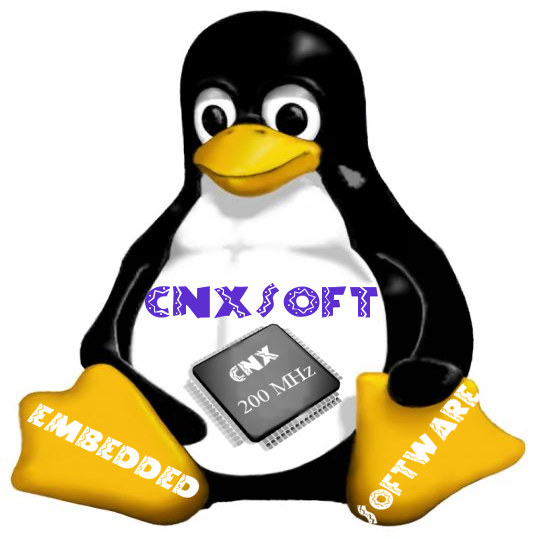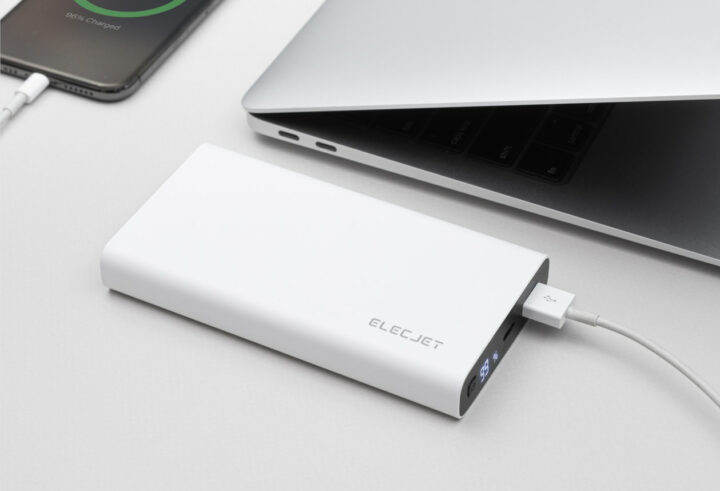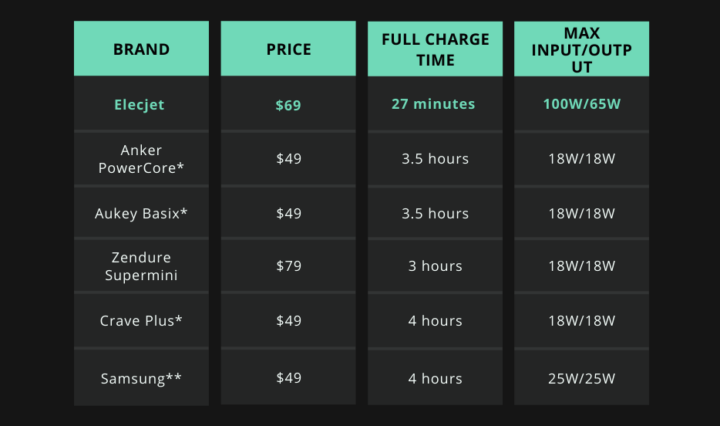Most power banks are made of Lithium batteries that charge in 3 to 4 hours and are good for around 500 charge cycles. But Elecjet Apollo Ultra is a different beast equipped with a 10,000 mAh Graphene battery that enables fast charging in just 27 minutes and offers a much longer lifespan with over 2,500 charge cycles.
In other words that means Apollo Ultra power bank is 5x faster and lasts 5x longer than most lithium-based power banks. Another way to look at it is that this graphene-enhanced 10,000mAh power bank can gather enough power in just 7 minutes to fully charge your phone. It can fast-charge your phone up to three times, charge two devices at once, and passthrough charging lets you charge Apollo Ultra at the same time.
Elecjet Apollo Ultra specifications:
- Battery Capacity – 10,000 mAh or 40 Wh
- Full Charge Time – 27 minutes
- USB ports – 1x USB Type-A port, 1x USB Type-C port
- USB-C
- Input – 5V3A, 9V3A, 12V3A, 15V3A, 20V3.25A
- Output
- USB PD 3.0: 5V3A, 9V3A, 12V3A, 15V3A, 20V3.25A
- PPS (Samsung Fast Charge): 3.3-11V5A, 3.3-21V3.25A
- USB-A output: 5V3A, 9V2A, 12V1.5A
- Life Cycles – +2500 cycles
- Dimensions – 130 x 68 x 17mm (equivalent to a thick smartphone)
- Weight – 230 grams
- Certifications – UL1642, UL2056, CE, FCC, IEC
The best Lithium-based power bank is probably ChargeAsap with a 20Ah capacity from batteries used in Tesla Model 3 car. It’s three times as big despite only having twice the capacity, and charges in 100 minutes, or adjusted for capacity in the equivalent 50 minutes, so about twice as slow. At $299, it’s also in a different price range as Elecjet Apollo Ultra sells for $69 right now, and the retail price will be around $100.
Elecjet also says it’s possible to charge the power bank and a device at the same time or charge two devices, for instance, a phone and a laptop, and it’s running much cooler than Lithium-based power banks with a maximum surface temperature of 43°C at room temperature.
Elecjet Apollo Ultra is currently offered on Indiegogo with over $240,000 raised from around 2,300 backers with 27 days left. Rewards start at $69 (Early bird pledge) with the retail price slated to be $100, but you’ll also find bundles for an even better deal per unit. Shipping adds $10 to $15 and you will not need to wait for too long as deliveries are expected to start right after the campaign is completed in January 2022.

This account is for paid-for, sponsored posts. We do not collect any commission on sales, and content is usually provided by the advertisers themselves, although we sometimes write it for our clients.
Support CNX Software! Donate via cryptocurrencies, become a Patron on Patreon, or purchase goods on Amazon or Aliexpress








so…graphene-based battery. seems to be placed on the same shelf as the unicorn-horn-based battery.
Well, we will see soon enough how mysterious it is
Forbes, The Verge, and others have reviewed the device. It actually works
Doubt they’ve tested 1000+ discharges
>$240,000 raised from around 2,300 backers
Tingtongs 555
There’s nothing exceptional at all in charging a battery in 27 minutes, many batteries used in RC models typically support a 5C charge allowing a theoretical charge in 12 minutes (practically a bit more once you reach the constant voltage phase), as it’s important there to be able to quickly recharge a discharged pack (after it cooled down).
However having capacity, longevity and fast charge together is less common. Here the fact that they insist on graphene makes me think they are in fact Al-ion batteries, which seem to claim such specific improvements: https://graphenemg.com/energy-storage-solutions/aluminum-ion-battery/
Well, personally i think that battery that support PD 20V on top of passthrough charge with decent recharging speed for under 100$ seems like good deal, even if it’s “fake” graphene. Of course only if they didn’t lied about the quantity parameters
> many batteries used in RC models typically support a
>5C charge allowing a theoretical charge in 12 minutes
Many packs have 5C charge rate written on them but considering most of them don’t manage the stated discharge rate without turning from lipos into gassy sausages after a few cycles I wouldn’t really trust charging them above 2C and even then only when you really really need to.
There are in fact essentially two problems when charged too fast:
However the charging rate usually doesn’t affect the discharge rate (it used to in NiCd where it was common to charge them with a strong current before a short race). In any case I wouldn’t trust the discharge C-rating, especially when the battery starts to go lower than 3.7V at rest. Thinking about pulling 700A for 25 seconds from a 140C 5Ah is quite scary and sounds more like the description of a bomb than a battery powering a motor 🙂
There are plenty of reviews on the web and it seems like everyone is pretty satisfied with the performance